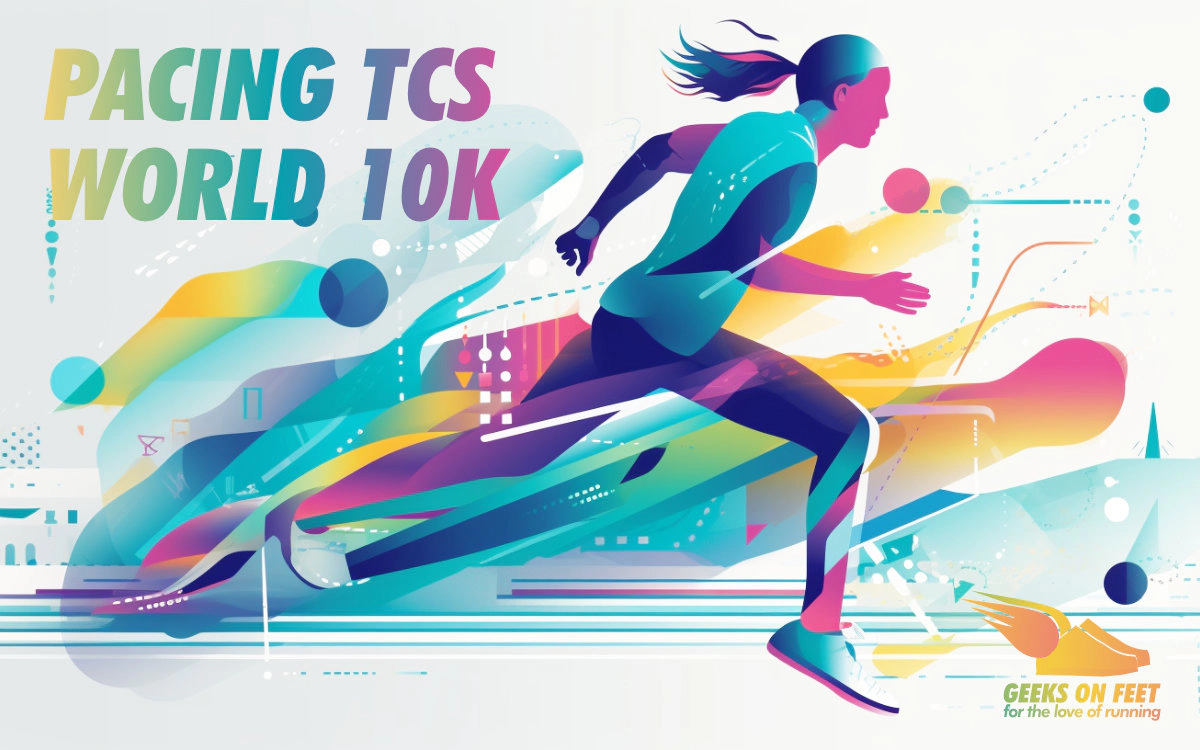
The season opener of Indian running calendar, TCS World 10K 2023, offers a tricky course. If you are running this World Athletics Gold label race, you should check out our Route Preview. As detailed in our route preview, the course offers tricky sections with rolling hill and plenty of twists & turns. If you are looking to run a strong race, it definitely requires some home work to plan your splits.
We did some number crunching for you to pace your race better. Before we dive further into numbers, let us take a look at the elevation profile first as it has significant bearing on pacing strategy.
The first and seventh kilometers of the course have the most elevation gain. The first has a net elevation gain of 10 meters, while the seventh has a net gain of 8 meters. The 9th kilometer has a gentle elevation gain of 5m
The second, third, and eighth kilometers of the course have a net drop in elevation.
The remaining sections of the course are relatively flat.
We analyzed the paces of approximately 30 runners (sourced from Strava) who ran the last edition. We divided them into three categories based on their finish times (sub 40 minutes, 40-50 minutes, and 50-60 minutes). We’ve found some insights which might be useful for you in deciding your pacing strategy.
Kilo meter 3: The Downhill Dash:
Irrespective of their finish times, the third kilo meter stood out as the fastest section for all participants. This section, which comes on MG Road, has a downhill slope.
Kilo meter 7: The Uphill Challenge:
Seventh kilo meter is the slowest section of the race across all finish times. This stretch, located on Queens Road as you ascend towards the GPO, presents a significant uphill challenge no matter how fast you are.
Kilo meters 8, 9, and 10: The Acceleration Zone for Sub 40-Minute Runners:
Faster runners who finished under 40 minutes, ran kilo meters 8, 9, and 10 much faster than their overall pace. However, slower runners tended to slow down at the 9th km. Despite the relatively gentle grade, this 9th km section proved challenging. A ‘U’ turn at Coffee day Square adds to this challenge.
First Kilo meter: Navigating Crowds at the start
Runners with slower finish times exhibited more variation in their pacing during this stretch at the start. Our guess is that runners in line-up B and beyond, tend to experience significant crowds. Navigating through the crowd can be a daunting task, potentially. So when putting together your pace chart, ensure you are cognizant of time you will loose here.
Based on the data above, we’ve put together set of recommended paces. Input your goal time, and the recommended paces will be shown considering all the factors that we’ve observed.

Aravind is a techie, running geek, and a marathoner. He is a CrossFit Level 1 Trainer. He loves all things technology and technology in running, with special interest in running form analysis.